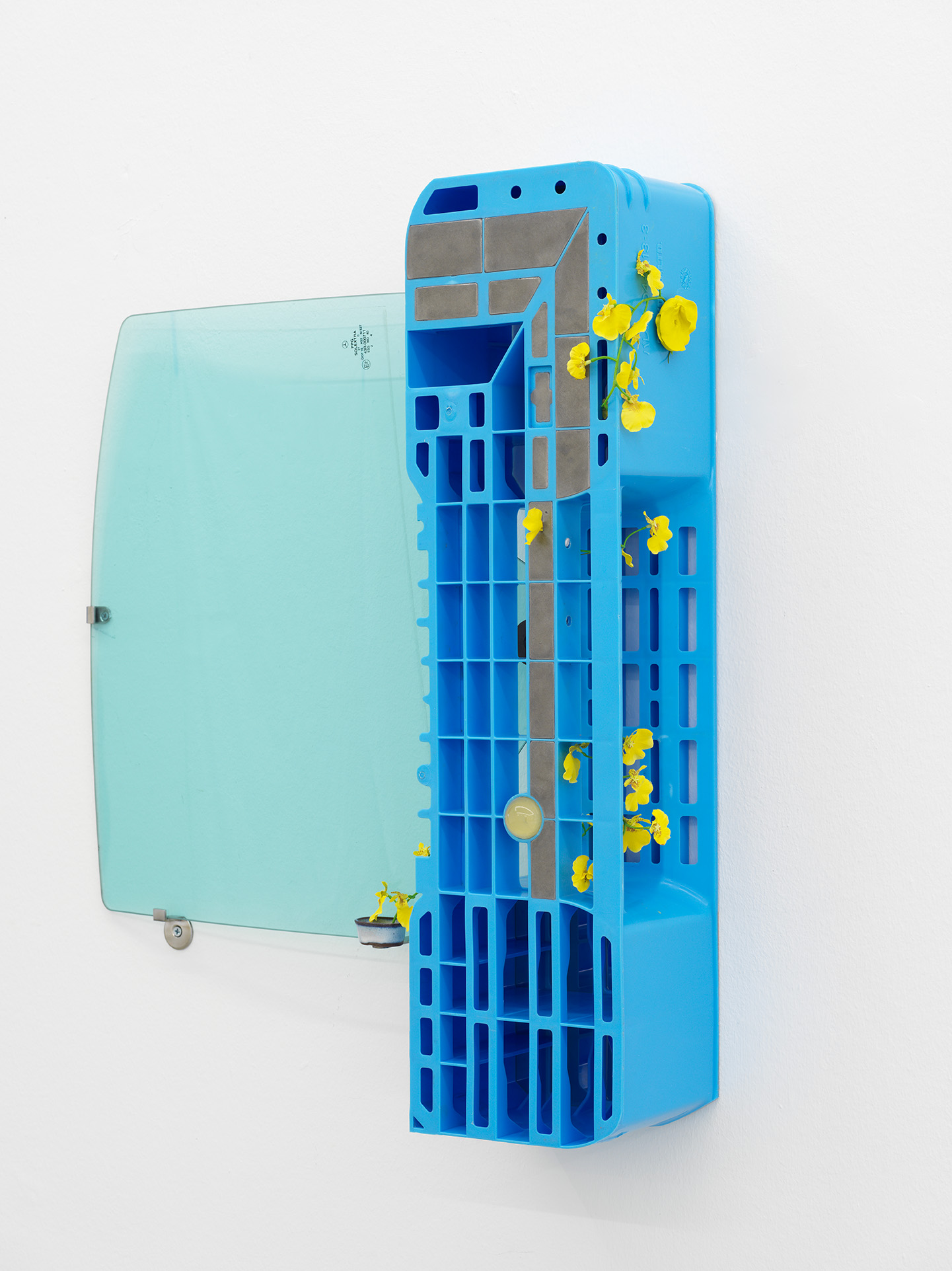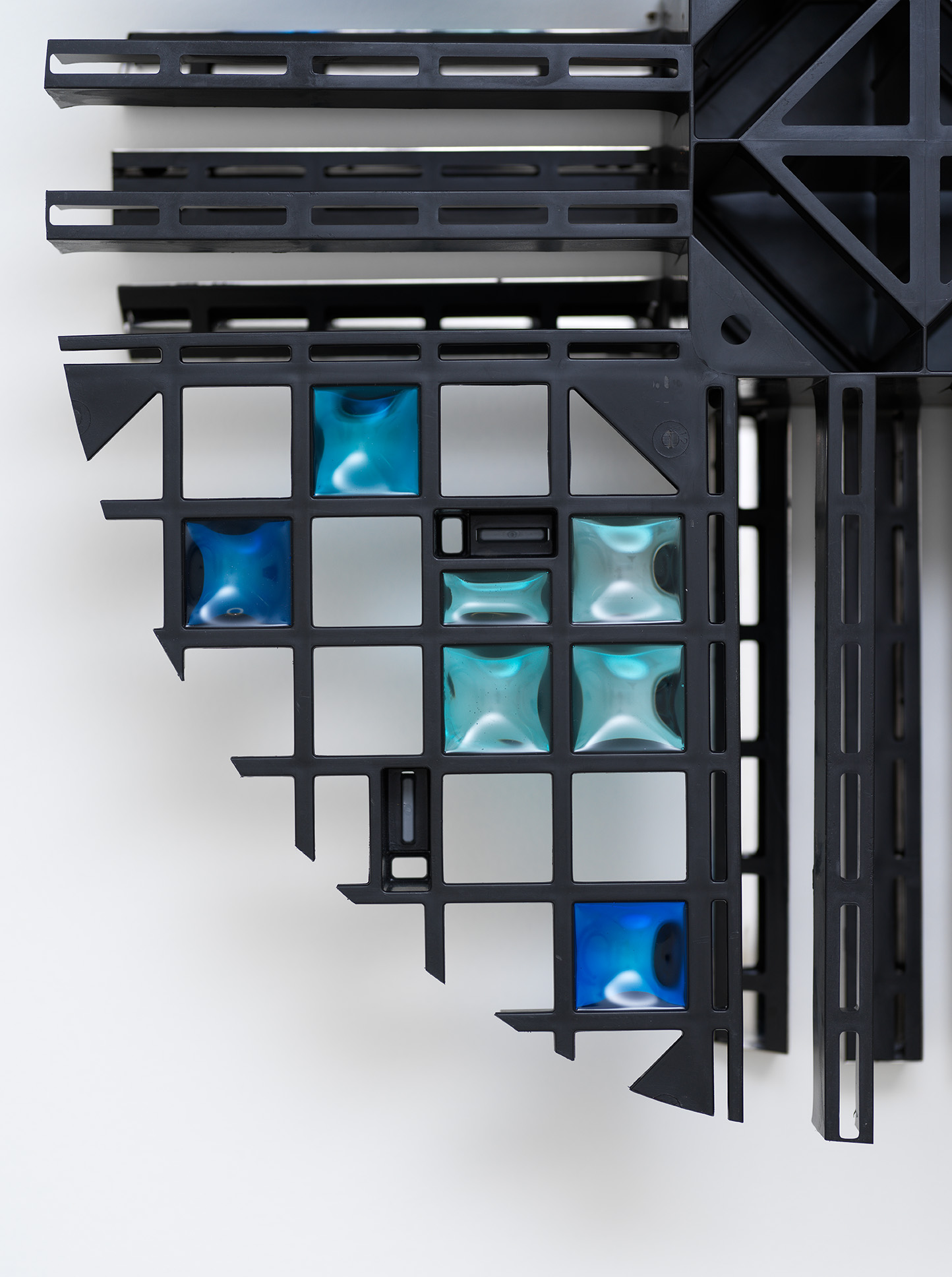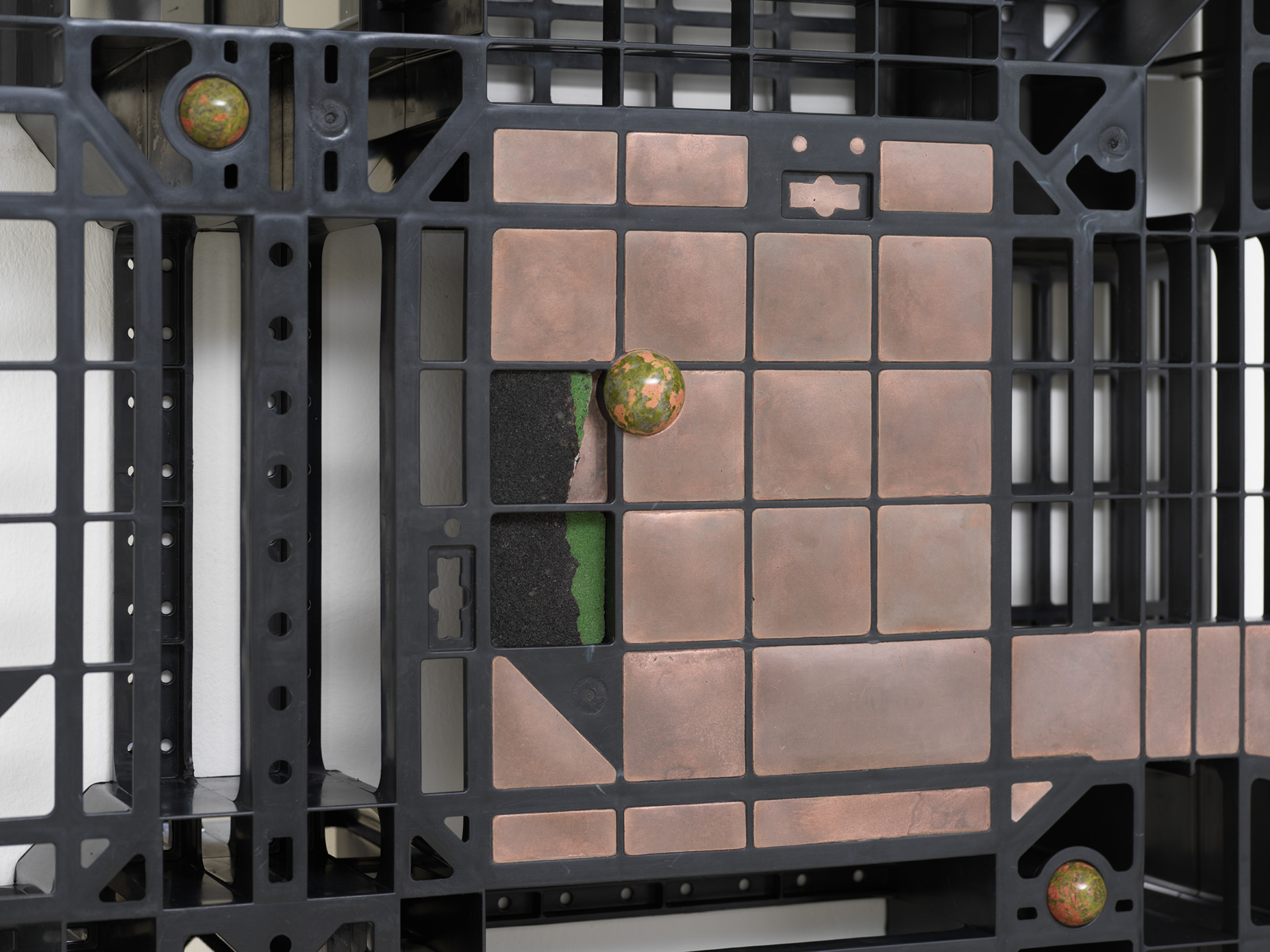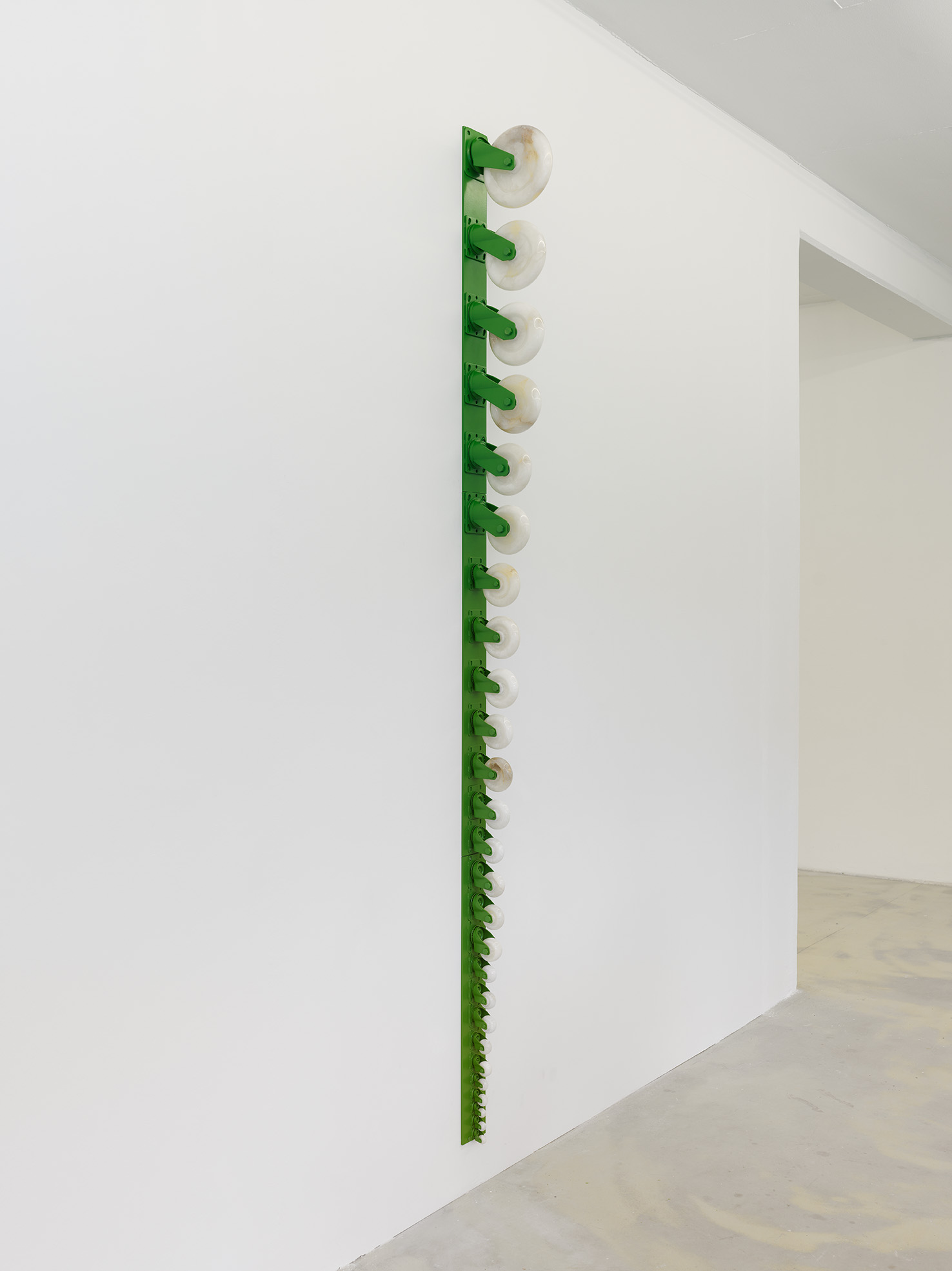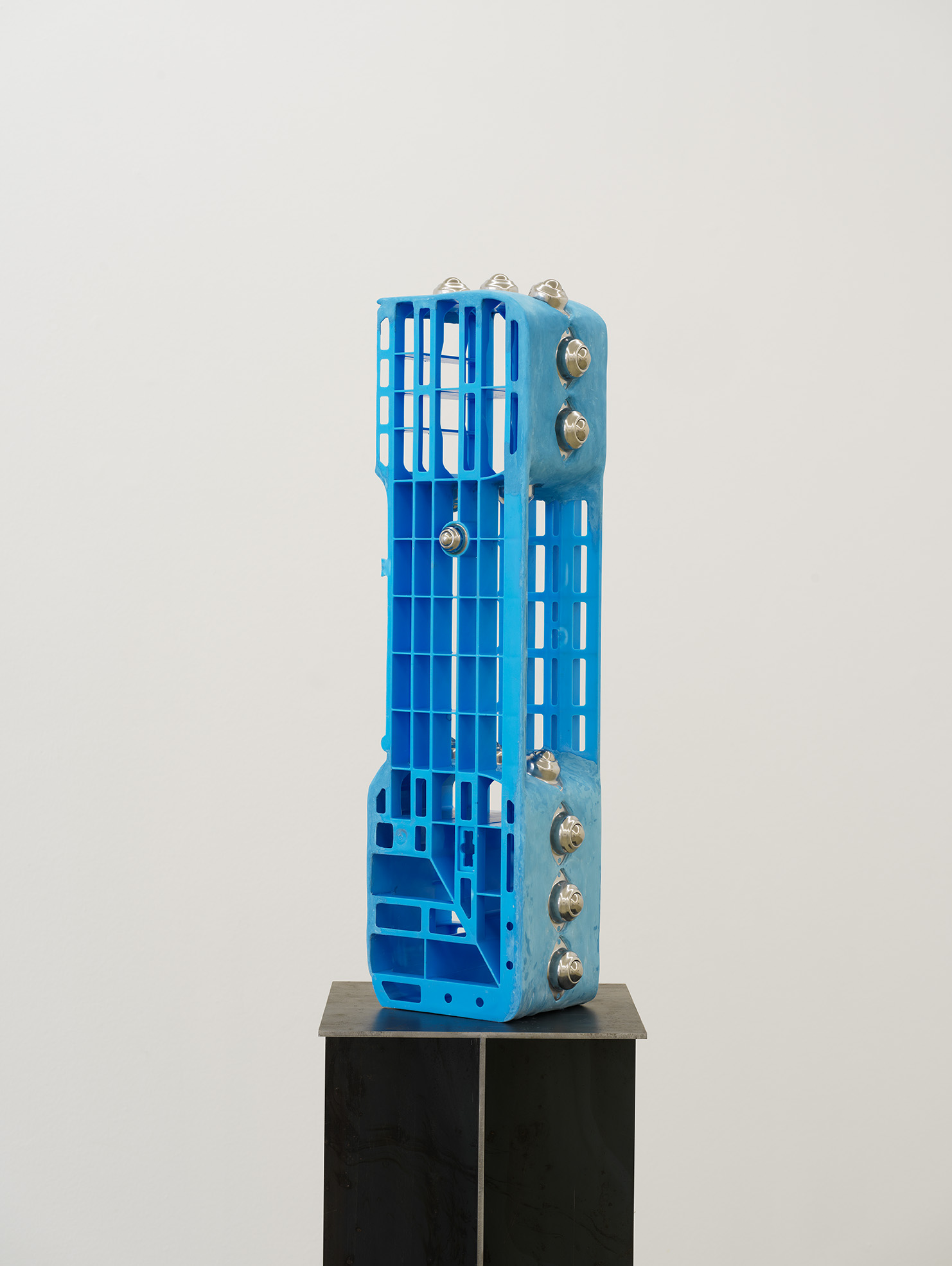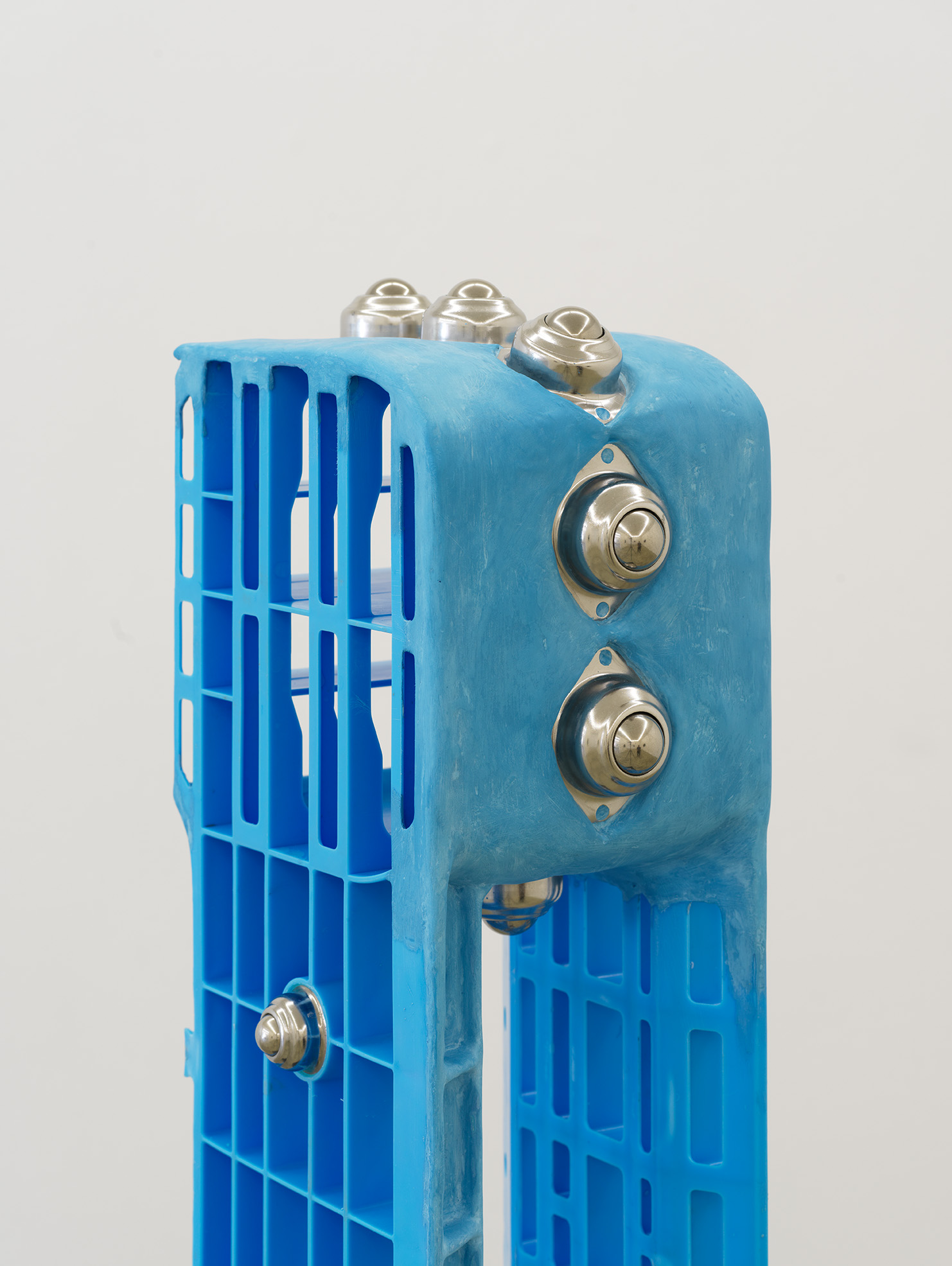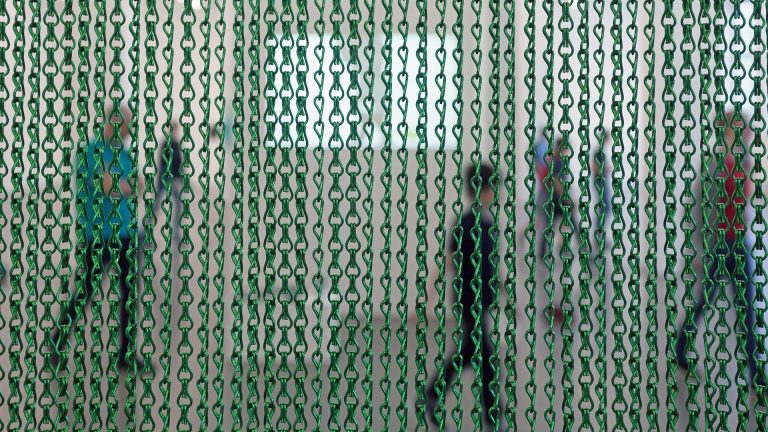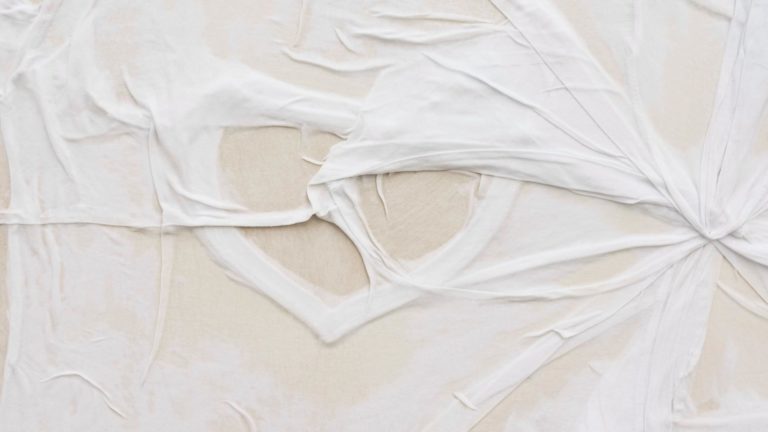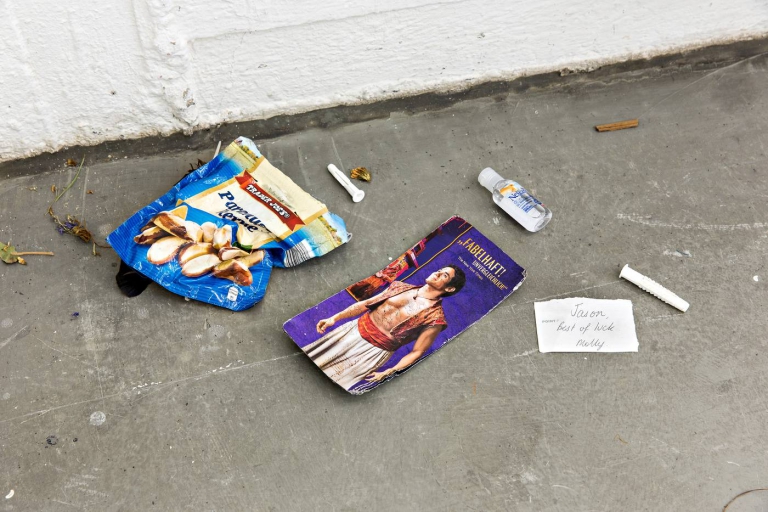Artist: LeeLee Chan
Exhibition title: Antinomies
Venue: Klemm’s, Berlin, Germany
Date: September 16 – October 29, 2022
Photography: images copyright and courtesy of the artist and Klemm’s, Berlin
Klemms Berlin is pleased to open Antinomies, LeeLee Chan’s first solo exhibition with the gallery. Hong Kong-based Chan received her MFA in painting from the Rhode Island School of Design in 2009 and her BFA from the School of Art Institute of Chicago in 2006. In 2020, Chan was the recipient of the ninth BMW Art Journey, the outcomes of which form the basis for the work on display.
In her meticulous sculptural practice, Chan assumes a variety of positions—archeologist, ragpicker, antiquarian—to meditate on the complexity of materials and their movement around the world. Trained as a painter, she often translates these efforts into relic-like wall-based structures that recall the compositional logic of religious icons and totems. In sacralizing materiality, cultural origin, movement, and shifting symbolic signification, Chan imbues the disparate objects of the world with a sense of spiritual resonance and respect.
Central to Antinomies are Chan’s manipulated pallets sourced from Hong Kong’s Kwai Tsing Container Terminal, one of the busiest container ports in the world. Chan grew up in an apartment overlooking this permanently open, brightly lit, and noisy mega-infrastructure, and returned here as an artist after 12 years in the US. Kwai Tsing not only facilitates the movement of a vast part of the world’s commodities; it also holds its own material culture, such as the ubiquitous shipping pallets, which Chan has investigated since her return. Placed upright instead of stacked, the geometric patterns of these pallets recall so-called “Manchuria windows,” decorative stained-glass windows found in traditional Chinese architecture since the late 18th century. Not unlike Manchuria windows, Chan’s repurposed pallets are imprinted with the mark of time and wear, while their history—where they were made, what they have supported—is lost in obscurity. Thinking of them as bodies, these aging structures silently carry their own scars in the form of cracks, color fading, and bents from continuous loading and unloading, making each of these mass-produced objects unique and significant of a life lived.
Chan’s parents are long-time antique dealers who for decades have delicately restored and sold ancient objects (ranging from neolithic to Qing dynasty pottery) from their Hollywood Road shop in Hong Kong Central. The artist spent her childhood in this unique historical-material environment and learned how to restore and mimick material effects. Chan applies the care and accuracy of an antiquarian to restore the pallets in freehand, re-straightening distorted forms using a heat gun and hand-cutting them to produce new panels evocative of crosses. Following jewelry methods, she inlays the patterns of this newly autonomous corporeal structure with semi-precious stones as well as mineral rocks, industrial ox “eye” wheels, and artificial flowers. Accompanying these decorative inlays—evocative also of stained glass in European churches—are feng shui crystal balls, which for centuries have been employed in China in so-called “Seven Star
Array” (七星陣)arrangements for the purposes of energy healing and good fortune. These balls possess their own ancient material history, even if they today are cheaply sourced from online websites such as Taobao, where their origin and making are rendered obsolete—much like the pallets that facilitate their shipping.
In Fern Dweller, Chan extends the anthropomorphic metaphor by installing a “spine” of spinnable alabaster wheels along the gallery wall, extending well beyond human height. Alabaster is known for its translucent color and uses in devotional architecture; Chan was inspired by the alabaster window in the Mausoleum of Galla Placidia, a late antique Roman tomb in Ravenna, Italy built between 425 and 450 AD. Chan crafted these alabaster wheels in collaboration with artisans from a marble quarry in Carrara, Italy, where artisans have worked since the 15th century. As an object that cites both devotional, artisanal, and industrial systems, this spinal structure seems to sit balanced between worlds as an ambient totem, one that invites active contemplation through interaction.
Chan’s atmospheric sculptures are invitations to reflect on the ancient history of minerals, their various uses by humans, and how their circulation as commodities has engendered global networks of production and exchange that are themselves endlessly perplexing and fundamentally unknowable. Chan revels in the mysterious and ambiguous dimensions of the global supply chain of consumer capitalism, and casts its ubiquitous byproducts such as pallets, ball wheels, and packaging as potential relics of contemplation. These miscellaneous logistical items were often invented to improve performance efficiency and reduce labor, and thus contain their own hidden social histories of work, ritual, and struggle. Their circulation around the world is symptomatic of a ceaseless state of movement and change that itself can be thought of through the patterns of meditation.
Chan aligns this hypothesis with society’s somewhat arbitrary cycles of fascination with the ancient minerals; how they return in different ages and cultural contexts in both the East and West, engendering new forms of spirituality and aesthetic fervor (energy gemstones, for example, has recently returned as a trend amongst Hong Kong youth). Yet, as units in a sprawling global consumer society, the absolute permanence of these mineral compounds, produced over millennia and extracted from the ground, stand in stark contrast to the disposable and replaceable nature of most contemporary material culture. It is by bringing them together that Chan achieves a certain material serenity, where source materials, even if fundamentally obscure, are appreciated and contemplated whatever their origins and presupposed values.
In Chan’s careful engagement with the “stuff” of the contemporary world, there is a subtle proposal of a deeply personal and in fact spiritual sculptural ethic: a consideration for what materially gets to become art at all, and how it fundamentally changes their course in this world of matter.
—Jeppe Ugelvig
LeeLee Chan, Antinomies, 2022, exhibition view, Klemm’s, Berlin
LeeLee Chan, Antinomies, 2022, exhibition view, Klemm’s, Berlin
LeeLee Chan, Antinomies, 2022, exhibition view, Klemm’s, Berlin
LeeLee Chan, Antinomies, 2022, exhibition view, Klemm’s, Berlin
LeeLee Chan, Antinomies, 2022, exhibition view, Klemm’s, Berlin
LeeLee Chan, Antinomies, 2022, exhibition view, Klemm’s, Berlin
LeeLee Chan, Antinomies, 2022, exhibition view, Klemm’s, Berlin
LeeLee Chan, Antinomies, 2022, exhibition view, Klemm’s, Berlin
LeeLee Chan, Lucid Formation (Azure), 2022, Found plastic pallet, stainless steel mirror, steel, urethane resin, UV-resistant pigment, 81 x 71 x 15 cm
LeeLee Chan, Lucid Formation (Azure), 2022, Found plastic pallet, stainless steel mirror, steel, urethane resin, UV-resistant pigment, 81 x 71 x 15 cm
LeeLee Chan, Double Oculus (Amber), 2022, Found plastic pallets, stainless steel mirror, steel, urethane resin, UV-resistant pigment, acrylic resin composite, epoxy, copper, Agate, 90 x 125 x 15 cm
LeeLee Chan, Double Oculus (Amber), 2022, Found plastic pallets, stainless steel mirror, steel, urethane resin, UV-resistant pigment, acrylic resin composite, epoxy, copper, Agate, 90 x 125 x 15 cm
LeeLee Chan, Double Oculus (Amber), 2022, Found plastic pallets, stainless steel mirror, steel, urethane resin, UV-resistant pigment, acrylic resin composite, epoxy, copper, Agate, 90 x 125 x 15 cm
LeeLee Chan, Circuit (Jasper Green #2), 2022, Found plastic pallet, tennis court asphalt fragment, Unakite, acrylic acrylic resin composite, epoxy, copper, stainless steel mirror, steel, 71 x 71 x 16,5 cm
LeeLee Chan, Circuit (Jasper Green #2), 2022, Found plastic pallet, tennis court asphalt fragment, Unakite, acrylic acrylic resin composite, epoxy, copper, stainless steel mirror, steel, 71 x 71 x 16,5 cm
LeeLee Chan, Lucid Formation (Teal Moss), 2022, Found plastic pallet, stainless steel mirror, steel, urethane resin, UV-resistant pigment, 81 x 71 x 15 cm
LeeLee Chan, Vertical Garden (Calcite), 2022, Found plastic pallet and windshield. Calcite, artificial flower, ceramic plant pot, acrylic resin composite, metal powder, stainless steel mirror and hardware, 78 x 73 x 16 cm
LeeLee Chan, Vertical Garden (Calcite), 2022, Found plastic pallet and windshield. Calcite, artificial flower, ceramic plant pot, acrylic resin composite, metal powder, stainless steel mirror and hardware, 78 x 73 x 16 cm
LeeLee Chan, Fern Dweller, 2022, Alabaster, stainless steel castor wheels, powder coated steel, 284 x 11 x 27 cm
LeeLee Chan, Fern Dweller, 2022, Alabaster, stainless steel castor wheels, powder coated steel, 284 x 11 x 27 cm
LeeLee Chan, Cerulean Membrane, 2022, Found plastic pallet, stainless steel ox-eye wheels, acrylic resin composite, pigment, steel, sculpture: 78 x 22.5 x 16 cm, steel base: 120 x 33 x 33 cm
LeeLee Chan, Cerulean Membrane, 2022, Found plastic pallet, stainless steel ox-eye wheels, acrylic resin composite, pigment, steel, sculpture: 78 x 22.5 x 16 cm, steel base: 120 x 33 x 33 cm

